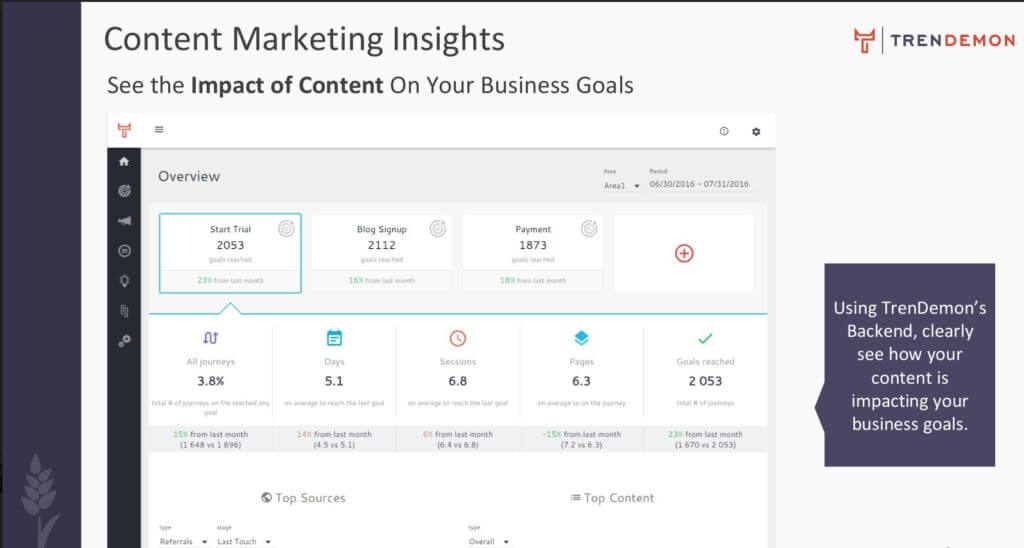10 Essential Steps to a Successful B2B Sales Strategy

There are occasions in life where it pays to get up, toss out your plans, and just go with the moment. Making B2B sales is not one of them. B2B selling is challenging. The stakes are higher, sales cycles are long, leads can be hard to come by – and when you do get a lead, you’re dealing with multiple decision-makers when you try to close it. To succeed in B2B sales, you need a good strategy, and you need to execute it well.
B2B buyers are demanding customers because they know what they want and place high expectations on the vendors vying to provide it to them. Over 70% of B2B buyers have a complete picture of what they’re looking for before they start talking to salespeople. So save the spontaneity for date night – when it’s time to engage with your leads, you want to be working from a detailed, dependable strategy.
What is a Sales Strategy, and Why Do You Need One?
A sales strategy is the plan a business follows to gain revenue by informing potential customers about their products then convincing them to purchase. A good strategy is reproducible in the sense that if you keep following it, you should keep making sales with new customers.
Sales and marketing deliver their best results when they operate in close alignment, but sales strategies and marketing strategies are two very different things. Marketing is all about generating awareness for what you’re selling among potential buyers. A sales strategy will help you persuade a specific buyer to purchase the goods you’ve brought to market.
With a B2B sales strategy that’s been tested and refined to deliver optimal results, you’ll be able to:
- Identify your target audience
- Make the strongest possible case for your unique selling points
- Approach your leads through the most effective sales channels
- Deliver sales pitches that close the deal
The following ten steps will help you reach that goal.
10 Steps to a Successful B2B Sales Strategy
1. Choose What Kind of Strategy You Need
A generic strategy is never going to outperform one built around your specific situation and business needs. The basic structure of your sales strategy can be determined by the goals you’re trying to achieve:
- Generating new leads
- Converting leads into customers
- Generating repeat sales from existing customers
Once you understand what your goals are, you can start building the right strategies around them.
2. Determine If Your Strategy is Inbound or Outbound
Picture an exclusive nightclub and a door-to-door salesperson. They’re both executing sales strategies, but they couldn’t be more different.
The nightclub is doing an inbound sales strategy. They’re marketing themselves in a way that generates interest in their target audience and draws them in. By seeking out their potential customers and approaching them directly, the salesperson has opted for an outbound sales strategy.
Deciding whether to go inbound or outbound depends on your position in the market and your specific business challenges. Inbound strategies work well when your target audience is actively looking for the solutions you’re providing. When you’re selling something innovative or disruptive, an outbound approach can help you make the case that you’ve got the solution to a problem your leads didn’t even know they had. Some businesses will choose a hybrid strategy, but the optimal implementations of the steps that follow will vary greatly depending on which approach you’ve prioritized.
3. Get Sales and Marketing Working Together
Just say no to friendly rivalries between sales and marketing — these teams should be all up in each other’s business. Sales talks to leads all day about the issues they’re struggling with and the product features they’d love to see. They can share those insights with marketing. Marketing can qualify high-potential leads for sales to connect with and provide relevant content for them to use.
When your company’s sales and marketing teams are closely aligned, you are primed to engage in account-based marketing (ABM). This approach treats every customer account as a market unto itself. A sales strategy based on ABM demands personalized messaging and content for each potential customer. It’s a resource-intensive approach, but more than 80% of marketers believe it delivers a higher ROI than any other method.
4. Research Your Target Customers
In B2B sales, it’s vital to learn everything you can about the companies you’re hoping to sell to: their business objectives, pain points, competition, day-to-day activities, and who their decision-makers are.
Create a buyer persona out of information that your salespeople can use. Interviewing existing customers and hearing their stories can help your sales team put buyer personas in context and develop more effective sales pitches.
Researching your market and customers can also help you profile the customers you shouldn’t target. It can save you from wasting resources and salespeople on leads that are unlikely to ever turn into buyers.
5. Identify Your Leads, Qualify, and Nurture Them
Researching customers will help you identify the leads worth pursuing, whether that involves utilizing brilliant marketing campaigns or having your sales team cold-call them. But before you commit those resources, it’s essential to take the additional step of qualifying your leads. You can score them according to various factors. These factors might include the company’s size, how closely they fit your ideal buyer persona, the length of their purchasing timeline. Once you know how your leads stack up, it’s simple to prioritize them accordingly.
B2B sales cycles run long, and some leads will have high potential even though they aren’t ready to move on a purchase anytime soon. By determining what stage your leads are at in your sales funnel, you can nurture them with appropriate content to sustain their interest.
6. Determine Key Activities
This step is where your strategy moves out of the realm of theory and into practice. There are three areas of activity to focus on:
- Social Media – Buyers will research you before they purchase from you, and one of the first things they’ll check out is your social media presence. Make sure they’ll find high-quality media, valuable resources, in-depth product information, and quick responses to any interactions they might initiate.
- Understanding the Buyer’s Journey – B2B purchasing decisions take time. The questions your buyers have when they’re initially narrowing down potential solutions will be different from the questions they have when they’re trying to reach a final decision. The better you understand their decision-making process, the better you’ll be able to lead them further down the sales funnel by providing relevant information at the most opportune time.
- Building Customer Relationships – B2B is rarely about quick sales to customers you never have to hear from again. Taking the time to build relationships helps ensure the customers you win are a good match, likely to be satisfied with your products, and recommend you to others. Even when leads ultimately decide not to purchase, the efforts you make to build trust and authority can strengthen your overall reputation.

7. Create Valuable Content
Many B2B buyers prefer to do their own research rather than listen to a sales pitch. The way to reach these buyers is to provide rich, informative content that speaks to their concerns and offers real value.
It’s always worth providing evergreen content like ebooks, whitepapers, and product demos. But when you have detailed customer data and insights into their buyer’s journey, you can create personalized content that delivers exactly what they were hoping to find – and increases conversions.

8. Get the Right Tools for the Job
Your sales can’t reach their full potential in a digital environment without the right software tools. Here are a few of the essentials:
- A CRM solution to capture lead information, organize customer data, and automate sales outreach processes.
- Analytics and reporting programs that extract insights from the data in your CRM and allow you to measure your sales performance.
- Social media management software to monitor your accounts, listen for relevant social conversations, and schedule postings.
- An attribution-based content personalization tool that tells you where your leads are coming from, maps out their customer journey, and delivers personalized content.
The more of these tools that integrate with each other and allow for automation, the easier your job will be.
9. Get a Team and a Plan
A sales strategy is necessary, but it’s just ideas on paper. It takes a team of fantastic salespeople to turn those ideas into actual sales and revenue. Your sales team should be experts in your product. They also need to be armed with the knowledge and insights you’ve gathered from market research.
To get things rolling, you have to define a sales process – the specific, repeatable actions your sales team will take to execute your strategy. Then, create an action plan, assign tasks, and see how your B2B sales strategy plays out.
10. Measure and Adjust
Your goals determine the metrics that define your success. The last step in developing a successful B2B sales strategy is monitoring it closely, measuring its performance, and making adjustments as you go. If some of your methods or activities aren’t delivering the results you want, swap them out for a different approach.
Conclusion
Having a solid understanding of your market, your customers, and your objectives will let you put together a robust B2B sales strategy that converts. To optimize your strategy, you must keep refining it over time through trial and error, hard-won insights, and using the best software tools.
Closing sales in the B2B world can feel like an uphill battle, but it doesn’t have to be. A great sales strategy lets you meet your customers where they’re at, and delivers the information they need to feel confident in buying from you.
